May 24, 2025 | 16:24 GMT +7
May 24, 2025 | 16:24 GMT +7
Hotline: 0913.378.918
May 24, 2025 | 16:24 GMT +7
Hotline: 0913.378.918
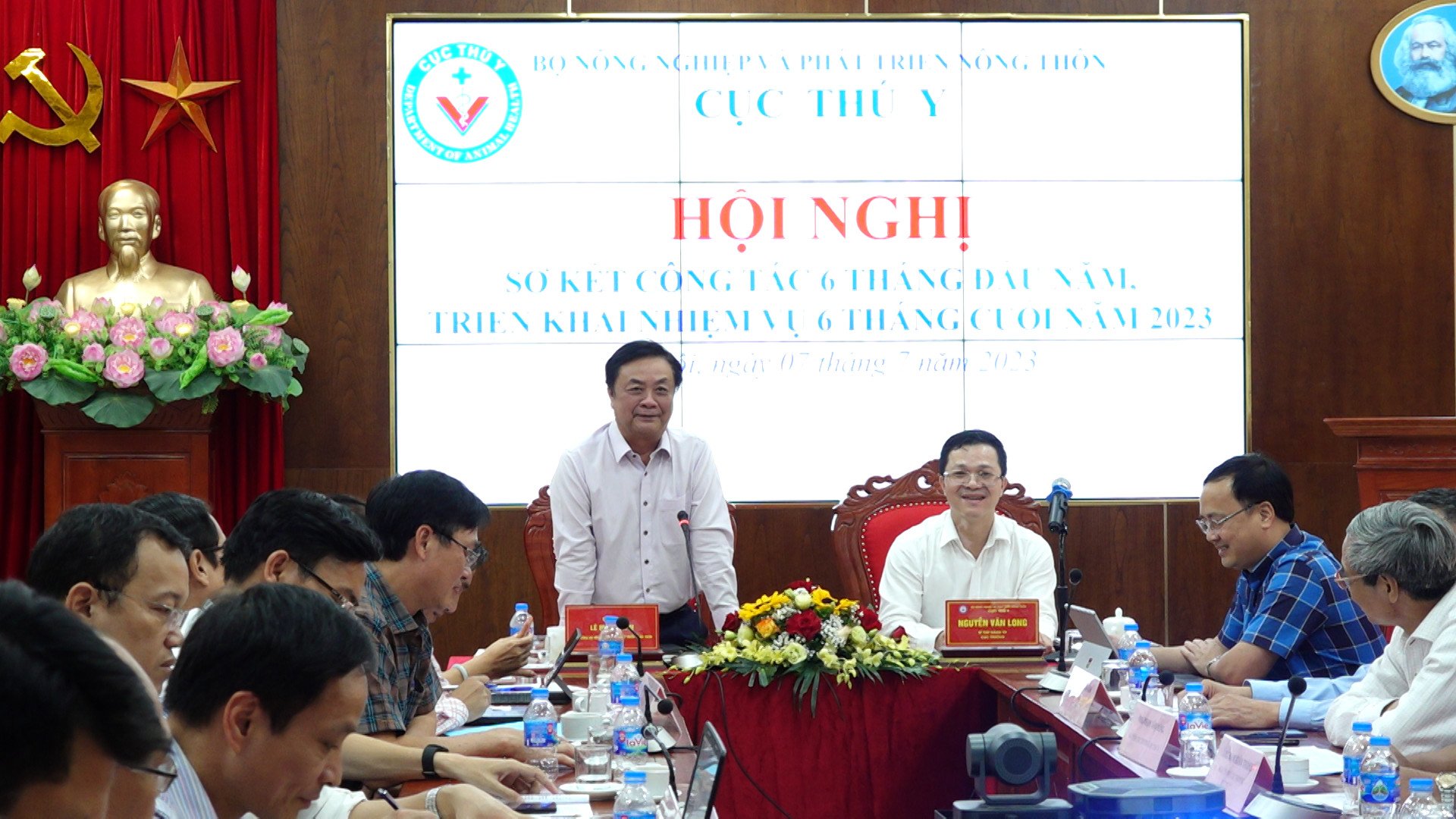
Minister of Agriculture and Rural Development Le Minh Hoan highly appreciated the mission, enthusiasm and work of those working in the veterinary industry. Photo: Linh Linh.
Reporting on the results of the Department of Animal Health in the first half of 2023 at a conference to review the tasks of the first six months of the year revealed that livestock diseases, particularly hazardous outbreaks, were effectively contained.
The country recorded 12 clusters of avian influenza H5N1; the number of infected, deceased, and destroyed poultry was close to 14,000, a decrease of 45% in areas and 76% in fatalities and destruction from the previous year.
7,000 pigs were infected, died and discarded as a result of African swine fever. Compared to the same time period in 2022, the number of diseased areas and deceased and culled swine decreased by 79% and 84%, respectively. In the first half of the year, 61 areas of the country were affected by lumpy skin disease. The total number of infected cattle was 346, while 76 animals were discarded .
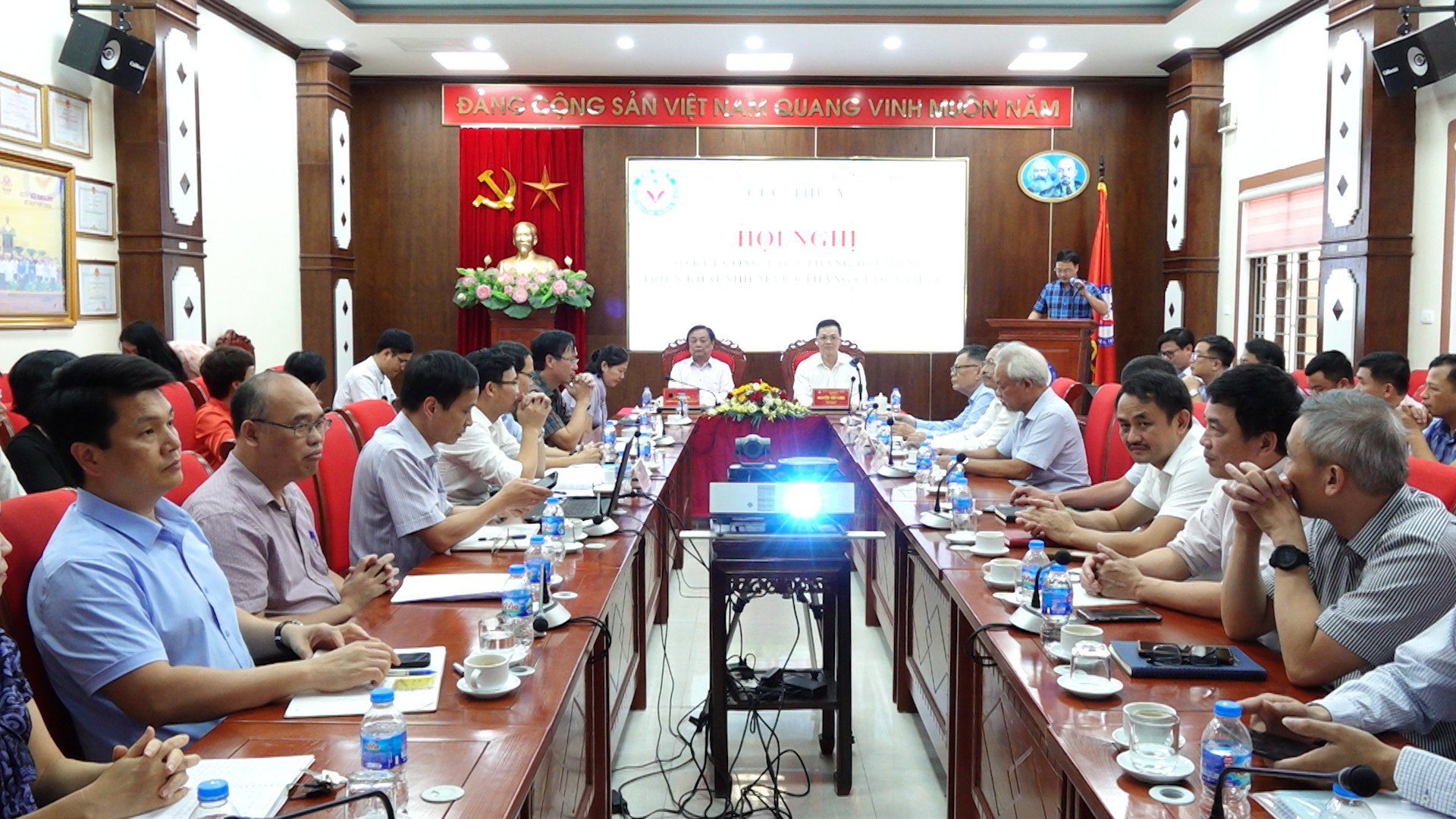
Minister Le Minh Hoan and Director of the Department of Animal Health Nguyen Van Long chaired the Conference to review the work of the first 6 months of the year and implement the tasks of the last 6 months of 2023 of the veterinary sector. Photo: Linh Linh.
Compared to the same period in 2022, the number of areas affected by the outbreak decreased by more than 71%, the number of infected cattle decreased by more than 84%, and the number of cattle that were killed decreased by nearly 82%.
The country as a whole recorded four anthrax outbreaks, which caused 20 buffaloes and cows to become ill and die.
Cattle that have not been vaccinated against anthraxosis were the primary cause. People did not notify the authorities or local veterinary agencies when buffaloes and cows perished; instead, they slaughtered and consumed their meat, infecting a total of 17 people.
No infected animals or humans have been discovered since the outbreak has been contained.
In contrast, the rabies situation was complex during the first six months of 2023. According to the Ministry of Health's report, the country recorded 41 incidents of rabies-related human deaths, an increase of 16 cases from the previous year. While the number of vaccinated canines and cats reached 3,3 million, only 44% of the 7 million total livestock in the country were vaccinated.
Vaccination rates are below 10% in a number of areas, notably in some western provinces. Thirteen municipalities have vaccination rates below 25%.
Mr. Ngo Van Bac, director of the Central Veterinary Diagnostic Center, stated in his report on the testing situation of zoonotic diseases that the positive rate for rabies on the number of samples tested at the Center was 50 percent higher than the previous year.
The anthracnose disease broke out in border provinces this year, and environmental work should be prioritized because the pathogen can remain in the soil for up to 30 years.
Leaders of the Department of Animal Health have stated that for the control of these two diseases, effective vaccination and public education are required. Only five samples proved positive for avian influenza, demonstrating the effectiveness of the vaccine.
In light of the aforementioned epidemic situation, the Department of Animal Health has stated that funds are required for the prevention, control, and surveillance of new diseases entering Vietnam and the evolution of old pathogens.
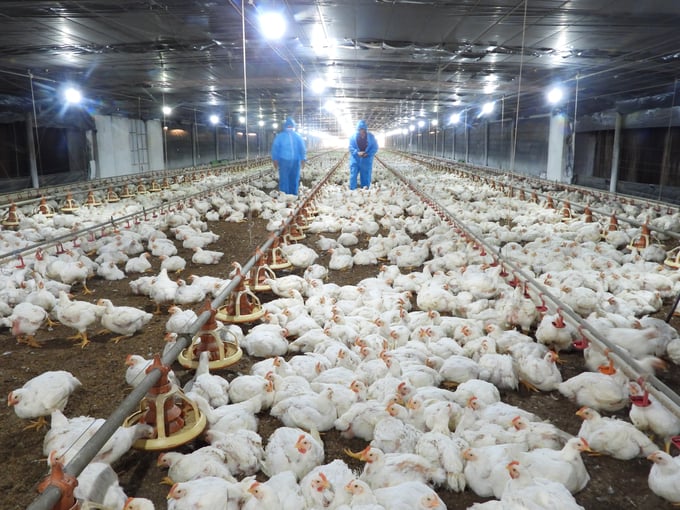
In the first 6 months of 2023, the disease in livestock and poultry was basically effectively controlled by the veterinary industry. Photo: Linh Linh.
Other prevalent diseases in livestock and poultry were detected and effectively controlled during the first half of the year, preventing the spread of significant epidemics. There are currently effective vaccines to prevent these maladies, and the nation is capable of producing a large number of vaccines.
In order to strengthen the prevention and control of terrestrial epidemics, the Department of Animal Health has advised directing, guiding, supervising, and urging localities to report animal diseases through the Viet Nam Animal Health Information System (VAHIS system), saving 95% of the time previously required.
Currently, it is expanding and concentrating on completing other VAHIS-integrated components, such as managing information on other animal diseases required for declaring epidemics.
In terms of aquatic diseases, the total damaged brackish shrimp farming area in the first half of 2023 was 17,927 ha (representing 87% of the total damaged aquaculture area), an increase of 7% compared to the same period last year.
Mr. Tien Ngoc Tien, Director of the Sub-Department of Animal Health for Region VII, explained this situation as follows: brackish shrimp farming area was damaged due to weather changes, salinity in some estuaries was insufficient for shrimp farming, resulting in slower stocking in the first months of the year than in 2022.
In addition, shrimp prices in the early months of 2023 remained low, causing shrimp farms and establishments not to maximize capacity and not to invest in quality seed, resulting in the contraction of brackish shrimp farming regions.
Minister Le Minh Hoan opined that, in the recent past, the Department of Animal Health accomplished its sector mission under the close supervision of Ministry of Agriculture and Rural Development leaders, specifically Deputy Minister Phung Duc Tien.
In light of the fact that nature, animals, and plants play an essential role in sustaining human existence, the Minister suggested that the veterinary industry consider animal welfare and the One Health approach in the context of the harmonious relationship between humans, animals, and the environment.
"The veterinary industry's mission is not limited to safeguarding the health of livestock for economic development and export. You must consider the question: What should be done to prevent 100 million people from experiencing physical and mental health issues due to food insecurity? This is a difficult matter, but we must see it through to the end," Minister Le Minh Hoan emphasized.
The commander of the agricultural sector stated that the communication of the veterinary industry is also a matter of change; do not be a 'hostage' to the issued dispatches, but rather find a structured solution to manage 10 million livestock households.
In addition to organizing technical and professional seminars, it is necessary to hold seminars to discover ways to bring regulations and standards closer to the public and the appropriate audience, particularly with the support of information technology and multimedia communication as it exists today.
How to communicate the enthusiasm and initiatives of the veterinary industry to the public, thereby contributing to a substantive change in social perception in accordance with a stable and sustainable management structure.
Receiving the Minister's opinion, the Director of the Department of Animal Health Nguyen Van Long pledged that the veterinary industry has been and will continue to change its thinking and approach to analyze current problems and propose scientifically and methodically sound solutions.
Apply legal documents in the field of animal husbandry and veterinary medicine with efficiency and adaptability. From there, encourage people to comprehend and voluntarily assist the veterinary industry in assuring the health of 100 million Vietnamese citizens, their families, and their communities.
Translated by Dieu Linh
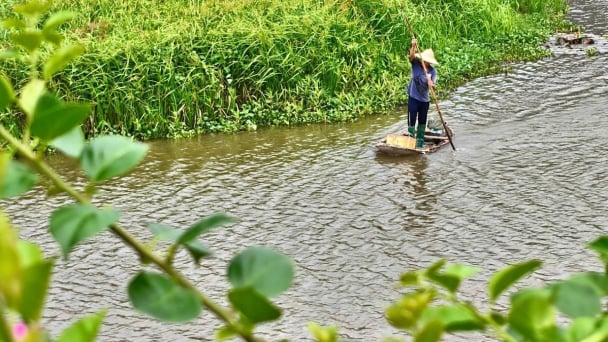
(VAN) In the tranquil wetlands of Van Long, there are quiet souls who guard the forests, nurture the waters, and oversee every bird and troop of langurs as protecting the essence of a living heritage.

(VAN) WWF, GIZ, IUCN, UNDP call for biodiversity conservation and sustainable development must be regarded as a unity in strategies for a green future.
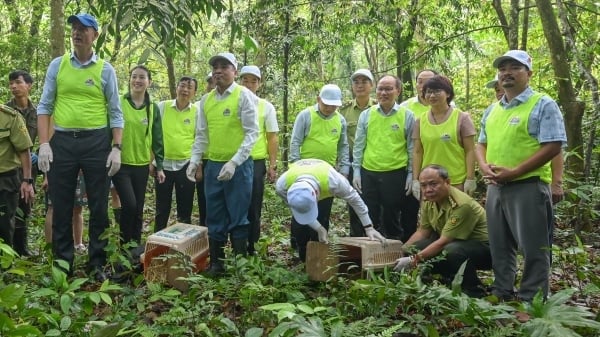
(VAN) On celebration of International Day for Biological Diversity, Deputy Minister Nguyen Quoc Tri called for practical actions to address nature and biodiversity conservation.

(VAN) Dr. Hoang Thi Thanh Nhan – Deputy Director of the Nature and Biodiversity Conservation Agency – highlighted this on the International Day for Biological Diversity, May 22, 2025.
![Ho Chi Minh city adapts to climate change: [2] Accelerating action](https://t.ex-cdn.com/nongnghiepmoitruong.vn/608w/files/chiqk/2025/05/22/4024-4220-bien-doi-khi-hau-1-100626_766.jpg)
(VAN) Clearly recognizing the challenges posed by climate change, Ho Chi Minh city has swiftly shaped its policies and implemented practical solutions to adapt.
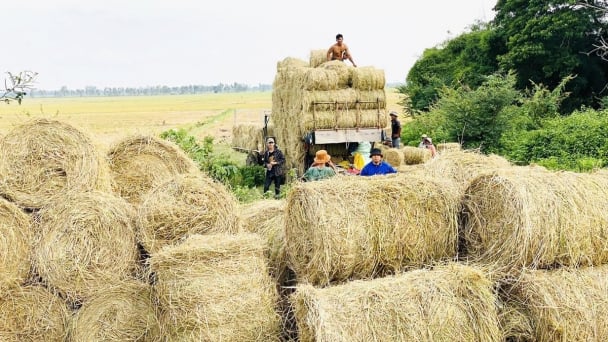
(VAN) Rice straw is no longer just a discarded byproduct, but it is becoming a green resource that helps farmers in the Mekong Delta reduce emissions and promote circular, sustainable agriculture.

(VAN) Other Effective Area-based Conservation Measures (OECMs) are solutions that contribute effectively to achieving the goals of the Kunming–Montreal Global Biodiversity Framework.